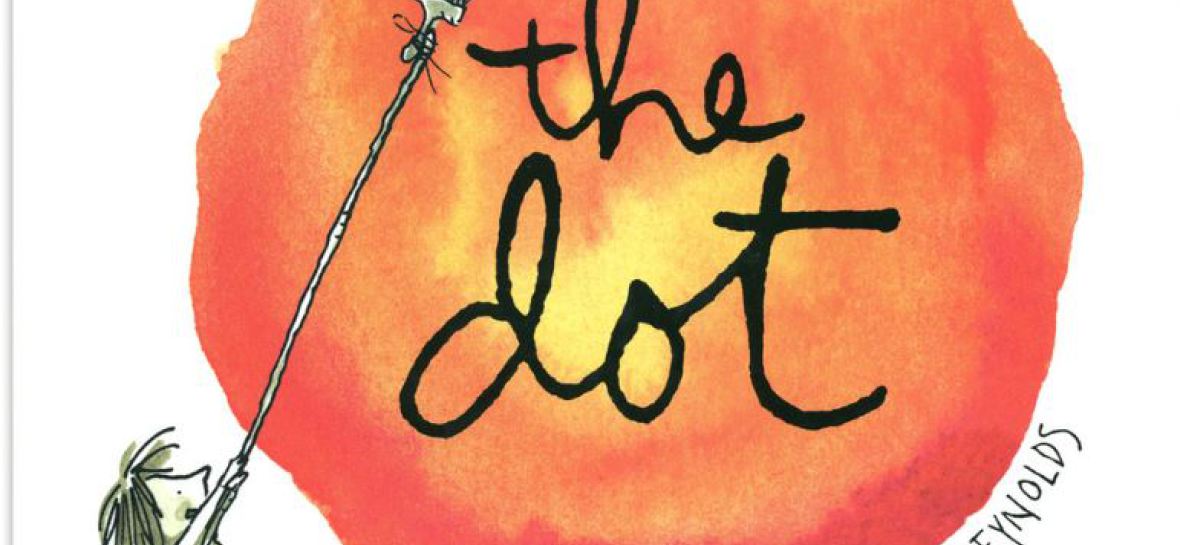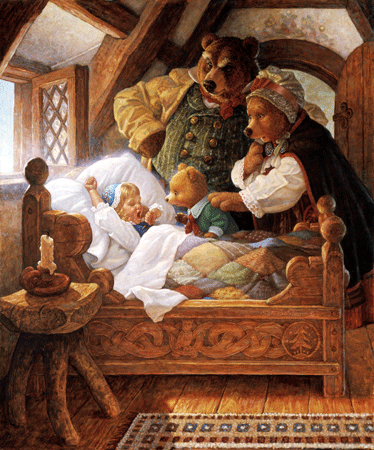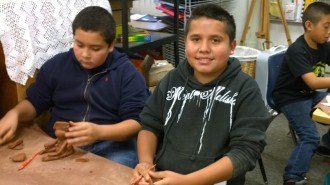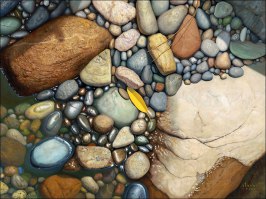

- I am an Artist; Arranging Stones
- Nature of Line Painting with Water
- I am Line; Drawing in Sand
- Oh, to be a Dog!
- The Cat's Pajamas
- Artists in School:Arranging Flowers
- Artists at Home
- Down on the Farm
- Pumpkin Patch Fun
- Leaf Printing
- Owl Babies
- Thanksgiving
- Gingerbread man
- Snowy Day
- Shadows
- Imagine a Miro
- Paint the Sky
- Spring has Sprung
- Blossoms and Bees
- The Hatching
- Snail Spells & Spirals
Artists at Home with Friedensreich Hundertwasser
What is a House?
Students will… Learn about the art of Friedensreich Hundertwasser. Create their own window in the free style of Friedensreich Hundertwasser.
Creating
Engage in exploration and imaginative play with materials (paper bags, tempera paint of different colors, large and colorful glitter glue.)
Through experimentation build skills in drawing, cutting, painting with brushes and squeezing out glue to create outlines.
Create art that represents the outside of a house with windows expressing their own individuality.
Articulating
Describe what is seem in Hundertwasser's work as well as their own, (both literal and expressive content)
Discuss their own works of art, using appropriate art vocabulary (e.g., color, shape/form, texture).
Finding Connections
Go on a neighborhood walk and notice how the houses are designed. how they are similar and how they are different. Discuss how and why houses could be considered art.
Through stories, look at images of houses from today and long ago, as well as in different countries and compare them to our dwelling places of today.
Evaluating
Using a rubric student evaluates their effort and quality of work and make a judgement if they were successful.
Into the Lesson
I have my kindergarteners enter our artist cafe quietly and calmly and sit them down on the carpet close to me where we can look at art works, have discussions, and share stories. For this lesson I have chosen Annie Ferris's photo image, "Hunderwasser's House," and Scott Gustafson's, "Goldilocks." We then talk about what we see, what we think, and what we wonder. I share the story,"Goldilocks and the Three Bears," by Jan Brett. As this lesson is for four weeks, then each week we review the 2 art images, and I read other books from my list below. This builds their knowledge and understanding about houses and how art is involved in creating those dwellings.
Friedensreich Hundertwasser must have loved the song, "What a Wonderful World." I know for certain he had a fantastic imagination and loved color and pattern! Even his house was filled with color!
"Friedensreich Hundertwasser believed that everyone should have the right to design the area around their own window. He called it, “Window Rights” He felt that the area around a window’s exterior that a person can reach with their arms belongs to the person as their own private living space, and that the individual may design this area as they like!" NascoIArtworks
Read Alouds & Read Together Texts
Through the Lesson
Teaching Through Centers
Teacher Center: Main Lesson
Decorate Your Window
Using a large grocery bag, cut it opem draw a window and decorate around the window using bright and metalic markers or tempera paint. Then use metalic glitter glue to create outlines. I ask students questions about why they make the choices they are making, but mostly I just sit with them and observe their actions. I offer coaching if it is really needed- like how to hold their brush, load their brush with paint, make strokes......
Imaginative Play: In the house of the Three Bears
This is an independent station. Students use porridge playdough to make meals for the three bears.Materials Needed: Playdough Porridge, wooden bowls, checkered Tablecloth, wooden spoons, Teddy bears optional. Cookie cutters. Extra Oats and cinnamon to add as topping sprinkels.
Construction:
This is also an independent center/ Building Blocks and Images of Friedensreich Hundertwasser's dwellings, and Folk Tale Cottages In the area I have pictures of his works and other houses like Frank Loyd Write, as well as homes from around the world.
Dramatic Play: In our Cottage
Little Bear's Table and Chair
Dress up clothes for Papa, Mama, and Baby Bear ie.( Aprons. Hats, Shoes)
Children can "set the table," Plates, utensils, tea cups,
Arrange silk flowers in the vases
write and draw their own invitations to tea
I like everything we do to be tied to the written word and fine art, So I fill the areas around the other centers with story books both fiction and non-fiction and a variety of art posters.
Ten minutes before clean up, I ask artist to arrange what ever we are working on, or if they need to to put on the finishing touches so they can " exhibit their work" during our "walk about." As I walk around the room, I ask them to think of a title/name for their art work, and explain why they chose their title. I write their words down on labels that have their pre-printed names. I also take pictures of their compositions. That will be used in their portfolios.
Beyond the Lesson
I create a serpentine snake line of students who follow me around the tables to view the work. We call this our "Walk About." I am always playing music, but change it to create a different mood by using claves to tap out rhythms. Later I shift this responsibility to a student. After we view the work, I ask them to share a thought about someone else's work. I use sentence starters that increase in complexity throughout the year. We start with, "I saw..., I thought...I wondered..." This is one way to get kids to use the language of art to talk about the art, build classroom community, as well as let kids ask questions of each other. When the children share how they did something really well, it's empowering. The teacher isn't the only one to teach.
As each child passes the artist critique center, I have them pick up an evaluation form so when they go back to their centers to clean up they can fill in their form. This form also has their name preprinted for easy identification. This also gives them an opportunity to read their names.
Assessment:
I followed all the directions for the assignment,
I was respectful, responsible and safe.
I shared with my team and my class.
4- Yes I did! 3- I mostly did. 2- I did a little. 1- Not Yet, but I will!
Artful Teaching
Mrs. Schellenberg & Young Artists
Ralph Waldo Emerson's Poem: Success- to leave the world a bit better, whether by a healthy child, a garden patch or a redeemed social condition; To know even one life breathed easier because of you.
Thank you AT&T
We used the wiring for our artful galimotos













